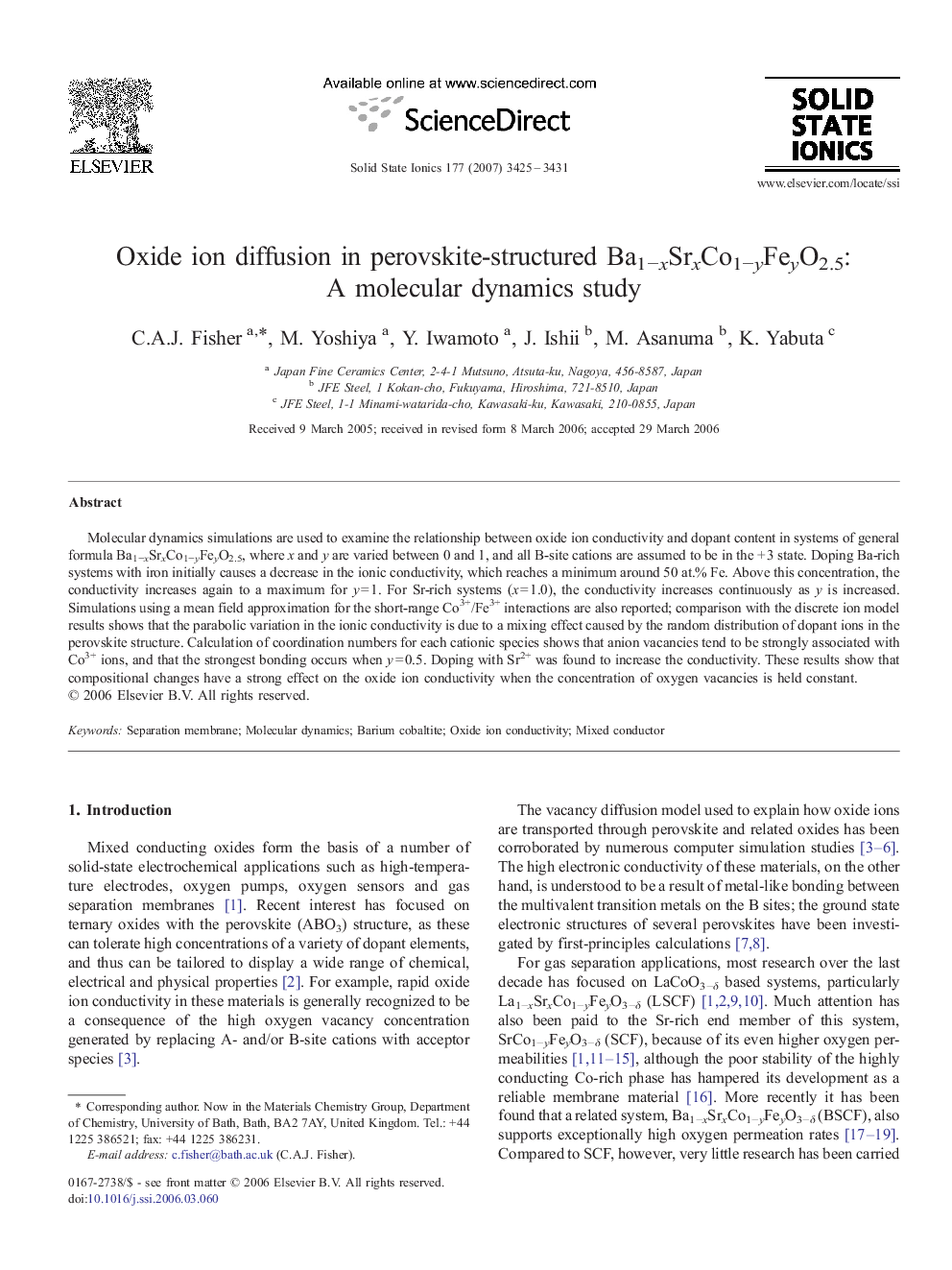| Article ID | Journal | Published Year | Pages | File Type |
|---|---|---|---|---|
| 1297422 | Solid State Ionics | 2007 | 7 Pages |
Molecular dynamics simulations are used to examine the relationship between oxide ion conductivity and dopant content in systems of general formula Ba1−xSrxCo1−yFeyO2.5, where x and y are varied between 0 and 1, and all B-site cations are assumed to be in the + 3 state. Doping Ba-rich systems with iron initially causes a decrease in the ionic conductivity, which reaches a minimum around 50 at.% Fe. Above this concentration, the conductivity increases again to a maximum for y = 1. For Sr-rich systems (x = 1.0), the conductivity increases continuously as y is increased. Simulations using a mean field approximation for the short-range Co3+/Fe3+ interactions are also reported; comparison with the discrete ion model results shows that the parabolic variation in the ionic conductivity is due to a mixing effect caused by the random distribution of dopant ions in the perovskite structure. Calculation of coordination numbers for each cationic species shows that anion vacancies tend to be strongly associated with Co3+ ions, and that the strongest bonding occurs when y = 0.5. Doping with Sr2+ was found to increase the conductivity. These results show that compositional changes have a strong effect on the oxide ion conductivity when the concentration of oxygen vacancies is held constant.
